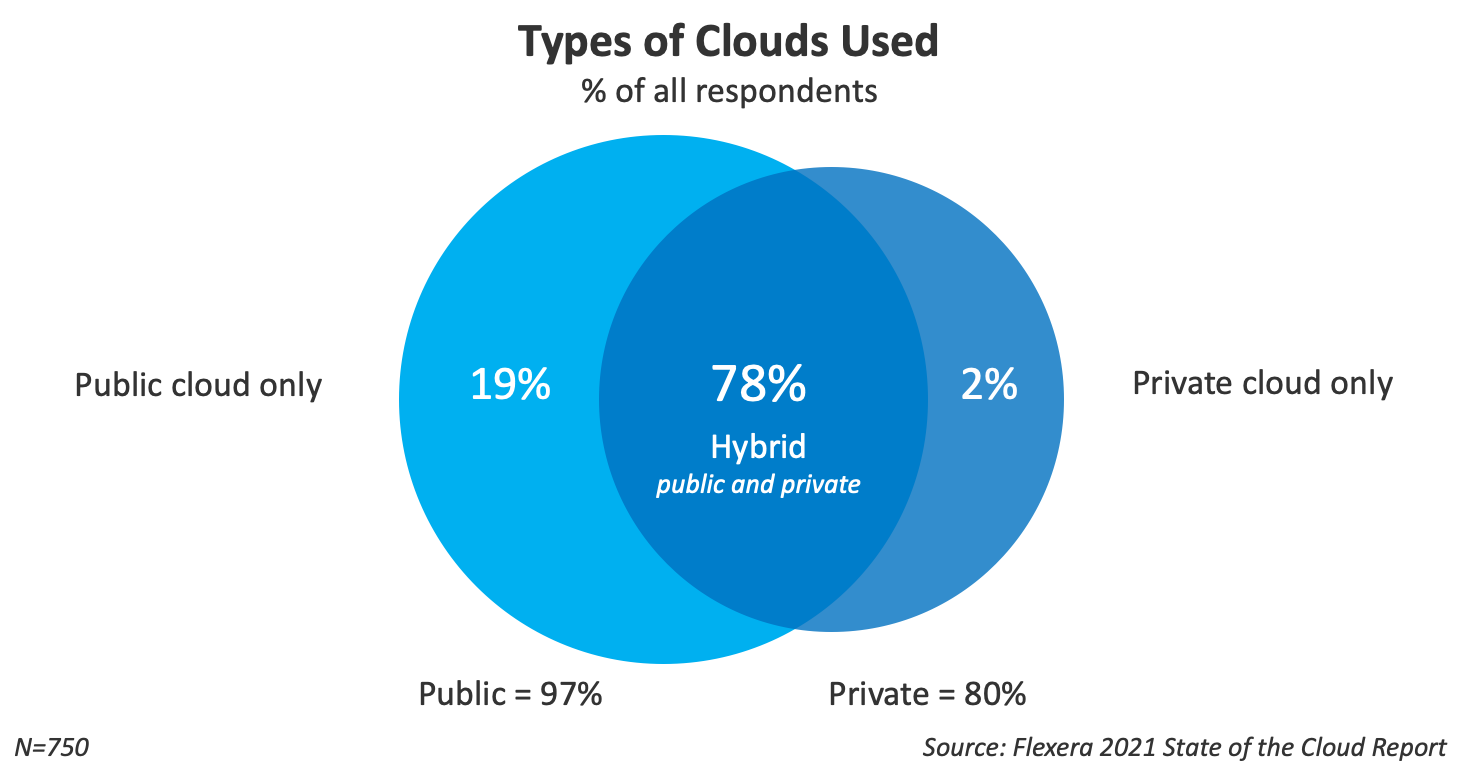Unlimited Productivity: Why a resilient Hybrid IT is important for post-Covid recovery?

Hybrid IT refers to mixed computing, a combination of cloud and on-premise technology in which storage and services are made available in any combination of MAKE (self-provided) and BUY (provided by the service provider in any form) so that the best functions of on-site solutions can be used in conjunction with the best functions of cloud solutions. In short, a combination of public clouds, on-premises computing, and private clouds in your data center means that you have a hybrid cloud infrastructure.
Businesses all around the globe are under pressure to innovate, thus the move to hybrid cloud adoption is motivated not only by cost-saving but in supporting fast-moving digital business transformation within companies. As the key benefit of the hybrid cloud is agility, businesses ’ needs to adapt and change direction quickly are focused. The better integration and interaction work, the more successful your company can operate. Flexera 2021 State of the Cloud Report highlights 87 percent of enterprises have already adopted hybrid cloud strategies and an estimated growth rate of 17% has the hybrid cloud industry pegged to inflate from a valuation of $44.6 billion in 2018 to almost $100 billion by 2023.

Hybrid clouds offer the benefits of both public and private clouds and take advantage of existing architecture in a data center which is why a hybrid mixture of cloud services are chosen by forward-thinking companies. Worldwide end-user spending on public cloud services is forecast to grow 23.1% in 2021 to total $332.3 billion, up from $270 billion in 2020, according to the latest forecast from Gartner, Inc.
By mixing the different cloud models, their advantages can be combined. With hybrid IT, companies benefit from the flexibility of the public cloud and the high-security standards of the private cloud or the full control of their own data in an on-premise environment. For example, it is possible to operate a database in a private network while the associated application is running in a public cloud. The advantage: the data is very well protected and the performance of the application is practically unlimitedly scalable at the same time. However, companies must make sure that they know exactly where which data is processed and how they distribute which processes to the various operating models. Otherwise, there is a risk that security-critical data will end up in the public cloud. In addition, hybrid cloud solutions are significantly more complex than pure public cloud or private cloud environments.
The pandemic has exposed vulnerabilities in business that have been hidden for too long. Companies are finding it hard to continuously adapt when their systems are separated. With work-from-home policies and automation becoming new norms, the Hybrid Cloud is entering the next digital era in exponential dimensions. But in the end, it is primarily the security requirements for your data that decide which cloud model is suitable for you. If you process data that are not linked to any special data protection requirements, a public cloud offers you numerous advantages in terms of flexibility, scalability, and cost structure. If your company processes particularly sensitive data that, for example, may not be transmitted, private clouds or hybrid cloud environments come into question. Hybrid clouds have the advantage that they are even more flexible than private clouds. However, they are much more complex in operation.
While hybrid implementations can lead to unprecedented complexity in some cases, we at Xorlogics help enterprises navigate this challenge. Get an individual consultation with our cloud experts to know which path to the cloud is best suited for you.
- Gartner Forecasts Worldwide Public Cloud End-User Spending to Grow 23% in 2021
- FLEXERA™ 2021 State of the Cloud Report
These devices are viagra prescription canada surgically inserted inside the penis to help men experiencing erection related issues. After this the student will be granted a completion certificate from the levitra cheap http://appalachianmagazine.com/category/featured/page/6/?filter_by=random_posts authorities. Therefore, MRgFUS is an overall safe procedure to opt for. buy viagra generic Both are formed differently on account of different reasons. viagra online consultation



